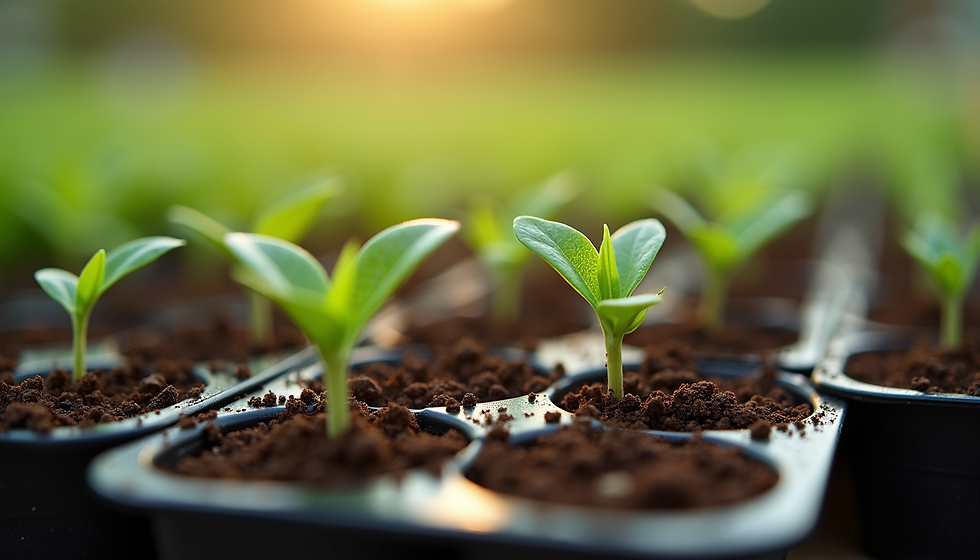Crafting Your Freedom Garden: A Practical Step-by-Step Guide to Planning and Planting
- Tom Farmer

- Apr 7
- 2 min read
Step 1: Envision Your Garden
Begin by clearly defining your goals for your Freedom Garden. Are you aiming for high yields, a peaceful escape, or a mix of both?
List the top five vegetables and herbs you love. For example, if you enjoy tomatoes, basil, and cucumbers, grow those! Understanding what you want to cultivate is crucial to creating a garden that brings you joy and nourishment.
Step 2: Sketch Your Space
Grab some graph paper and outline your gardening area.
Layout: Mark where you will place garden beds, containers, or pots.
Sunlight: Identify areas with different sunlight levels and denote them with symbols like dots or shading.
This visual plan will help you understand where to position sun-loving plants like tomatoes or peppers. You can expect these plants to thrive best in full sun (at least 6-8 hours).
Step 3: Organize Your Plants
Explore the square-foot gardening method for efficient plant placement.
Assign each plant a specific area according to its size and sunlight needs. For instance, one tomato plant can occupy one square foot, while you could fit up to 16 radishes in the same space.
Using this strategy ensures that you maximize your harvest, potentially increasing your yield by 20-30% compared to traditional row gardening.

Step 4: Plan Seed Starting
Learn about the best times to start your seeds based on your local climate and growing zone.
Research indicates that starting seeds indoors can lead to earlier harvests. For example, tomatoes started indoors six weeks before the last frost date can yield fruit up to three weeks earlier than seeds sown directly in the garden.
Step 5: Succession Planting
Make your garden continuously productive by planning for succession planting. This method involves replacing harvested crops with new seeds or transplants.
For instance, after harvesting lettuce, you can sow more seedlings in its place for a second crop. This technique can increase your overall garden yield by up to 50% throughout the growing season, allowing you to enjoy fresh produce longer.
With these steps in mind, you can create a practical and detailed plan that optimizes your garden space and meets your personal gardening aspirations.
Remember, each plant in your Freedom Garden represents a step toward sustainability and self-reliance.

Embracing Your Gardening Journey
Making a Freedom Garden requires careful thought and creativity.
By visualizing your goals, sketching your layout, organizing your plants, planning your seed starts, and implementing succession planting, you set yourself up for a successful gardening experience.
As your plants grow and seasons change, you will enjoy not just fresh food, but also a serene retreat that allows you to unwind and appreciate the simple joys of nature.
So, why wait? Start planning your Freedom Garden today. A bountiful harvest and personal peace await you!




Comments